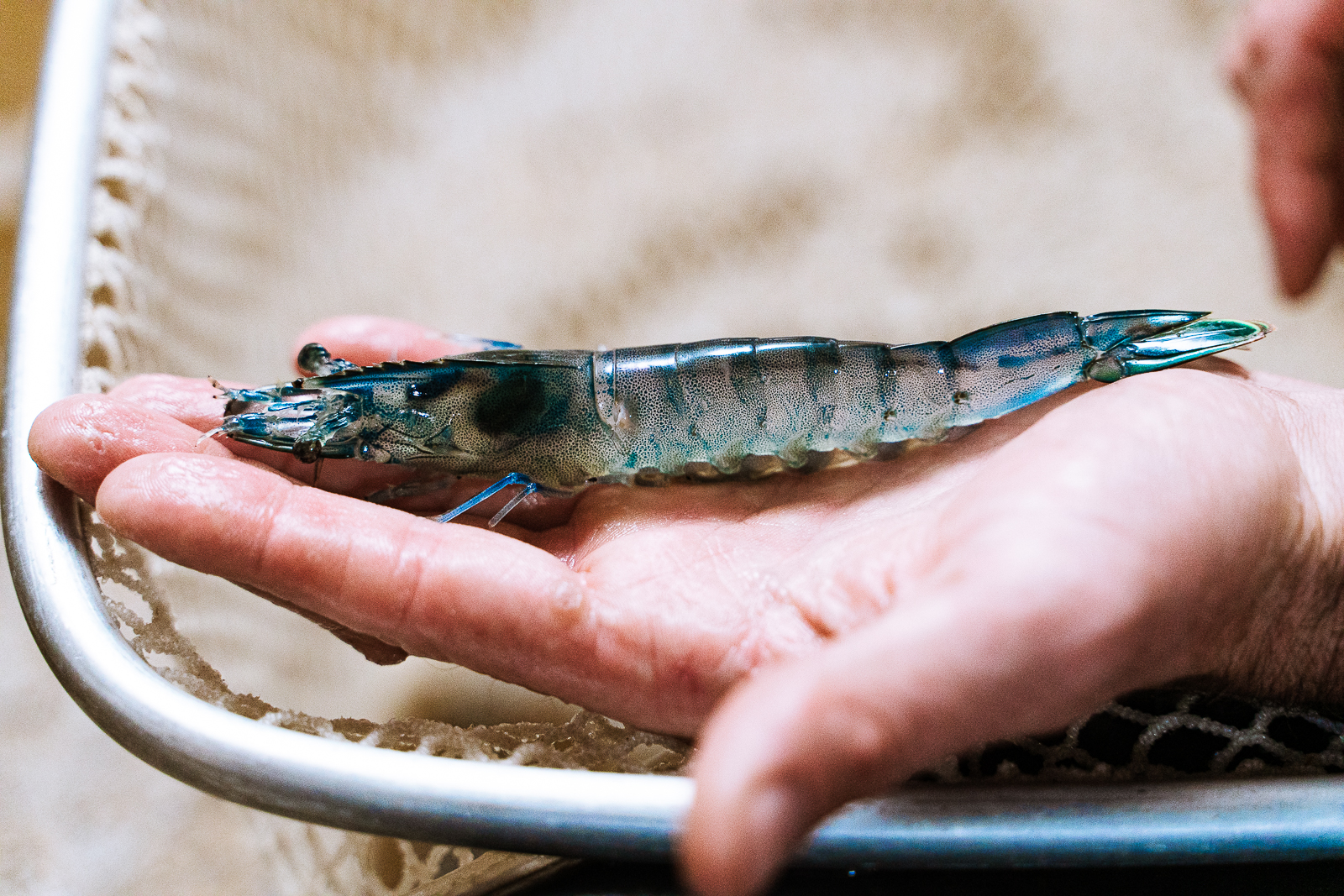For every one pound of wild shrimp harvested, you kill—on average—six pounds of other seafood in the ocean.
This sobering truth, along with other harsh realities for a seafood lover, like, for example, how the average piece of seafood you eat touches EIGHT different hands (from fisherman to processor, to packer, to distribution, to so many more in the consumer chain) before it reaches your plate, really started to affect Steve Sutton. He is the President and farmer behind L.A.’s first shrimp farm: the extremely cleverly named TransparentSea Shrimp Farm located in Downey, California. So much so that the Upstate New York native decided to change majors mid-college from a money-chasing Wall Street stockbroker to a passion-driven Marine and Fisheries Biologist.
“I had a moment where I asked myself: ‘If a little kid version of yourself were to come up to you as an adult and ask you, is the job or career you have right now what you always wanted to be? Would the answer be yes?’”
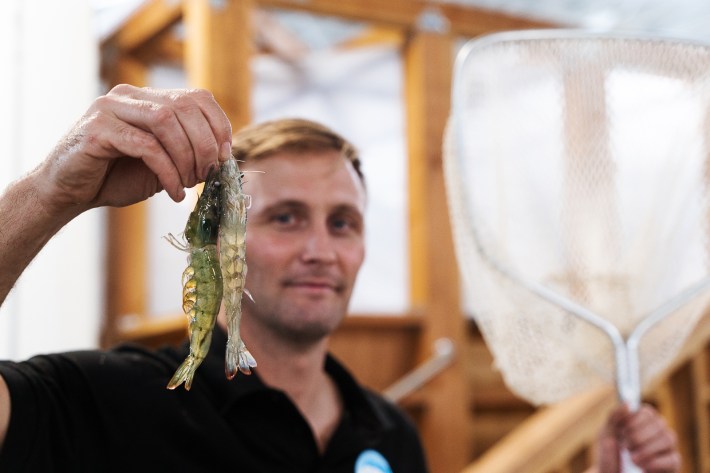
With a handful of teenage shrimp wriggling around in the palm of his hand, grown in tanks Sutton built himself. The answer to that right now is yes. There is no going back despite the debt and questionable decision to open a shrimp farm in the drought-parched ‘Latino Beverly Hills.’ There is no going back.
“The seafood system is broken,” Sutton says as he walks L.A. TACO through a tour of his cutting-edge facilities in SELA. Sutton is alluding to the problematic nature that comes with the territory of eating seafood. From slave-grown shrimp in Thailand to widescale seafood fraud continuing to happen globally or narco-controlled tuna and pen shell clams (confirmed to be happening in Mexico by L.A. TACO earlier this year) and “unprecedented die-offs” mysteriously happening in our oceans, it was all enough to make Sutton not just continue to eat seafood pretending that everything is OK—but do something about it.
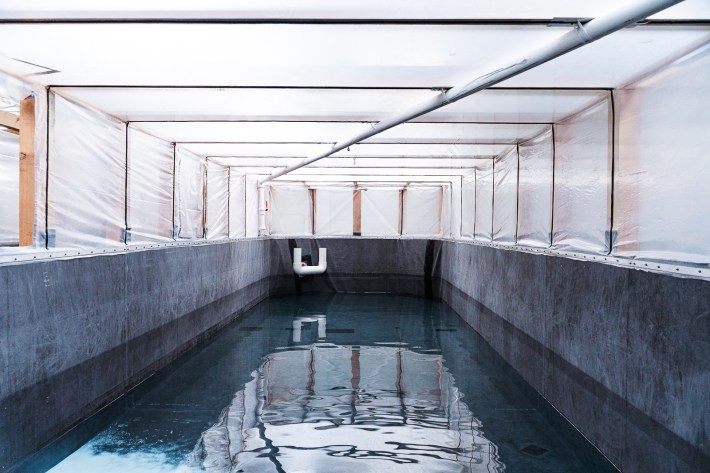
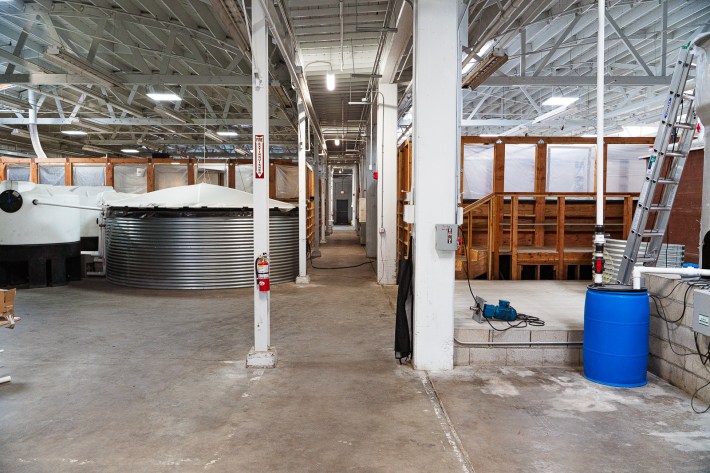
Sutton grew up oyster diving for money and lobstering with his grandfather on the east coast. Still, it was only a matter of time until the unsustainable nature of eating corporate-caught seafood in the U.S. started to creep in. Like how over 90 percent of the shrimp we eat is imported, despite the United States of America having more than 12,000 miles of coastline. So with a newfound Master’s Degree in Aquaculture, Sutton left for Thailand to learn the trade and eventually chose Los Angeles.
But of all, why Downey?
“I wanted to come to a progressive market that would be willing to pay a higher rate for a high-quality and ethical product. There are people here with diverse backgrounds who really value live fish.”
To be able to disclose “Downey, California” as the shrimp’s origin location on a fancy menu—and the questions that may arise from the diner after seeing that—is priceless.
Downey’s local government was also slightly more receptive to Sutton’s wild L.A.-grown shrimp idea and was willing to work with him. Long Beach was supposed to be the original home of his innovative farm, but Long Beach's costly zoning requirements for a start-up like TransparentSea ultimately did Sutton in and made him abandon that plan and head northeast.
Regarding the question that will be going through everybody's mind when it comes to opening a shrimp farm—dependent on water—in a severely drought-stricken state, Sutton is unafraid of answering and being transparent about that as well: He recycles 99 percent of the water used for his shrimp, and his carbon footprint is less than one percent compared to the average shrimp consumed in California. At TransparentSea’s max capacity, utilizing every inch of his 16,000-square feet of farming facilities, Sutton will be able to bang out 1,800 pounds of shrimp a week. That is approximately less than .05 percent of just the shrimp consumed in Southern California. Sutton makes all the deliveries himself in his company shrimpmobile.
Local chefs and restaurants usually become immediately obsessed with TransparentSea shrimp as soon as they get their hands on some. Chefs like Justin Pichetrungsi of Anajak Thai in the Valley already carry it on his weekly menu, as does chef Melissa Ortiz with her experimental seafood dinner series in Long Beach. Same with higher-end L.A. institutions like Gjelina, Found Oyster, and the Mexican seafood powerhouse, Holbox.

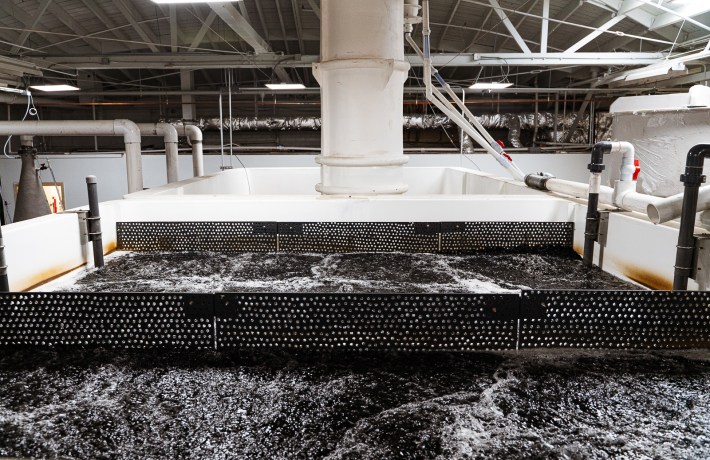
At first taste of the beautiful indigo-speckled prawns, it is easy to see why. Before Sutton came and his proudly L.A. shrimp, there was no way for L.A. chefs to get their hands on farmed shrimp that they can absolutely say was not treated with chemicals or antibiotics. That was just alive a couple of hours before serving. More than anything, to be able to disclose “Downey, California” as the shrimp’s origin location on a fancy menu—and the questions that may arise from the diner after seeing that—is priceless.
The resulting flavor and texture of the prawns is unparalleled. Sutton's shrimp just peeled and sliced, eaten raw tastes so deeply oceanically sweet that it conjures up that magical first bite of your first grey-green aguachile that you were too scared to eat but ultimately ended up loving. The texture? Creamy enough to almost be spread on toast. The variety of this particular prawn is a “Pacific white-leg prawn” that Sutton gets shipped out from Florida. Sutton grows them to be up to “jumbo” size (10 to 14 count), which takes three months to reach maturity, and if you’re fortunate and ask nicely, he may have some "softies" (extremely rare soft-shelled shrimp that can be eaten shell-on) available that can be eaten the same way as a soft-shelled shrimp.
However, the biggest takeaway from a tour with Sutton for any self-proclaimed shrimp lover is that eating the shrimp’s digestive tract is not bad to eat—at all. “Shrimp, unlike humans, have a very simple digestion system. They only digest about 40 percent of their feed, made from fish meal.” So all you're eating is most likely just fish meal and seaweed if you do accidentally forget to remove some when prepping at home.
As of the publishing of this story, each pound of TransparentSea’s shrimp retails for about $25 and is a bit cheaper if you buy wholesale. The only way you can purchase for now is by going direct to the farm located about a block away from the intersection of Imperial Highway and Lakewood Boulevard. But eventually, Sutton will start to offer his shrimp at select Farmers Markets.
Follow TransparentSea Shrimp Farm on Instagram.
